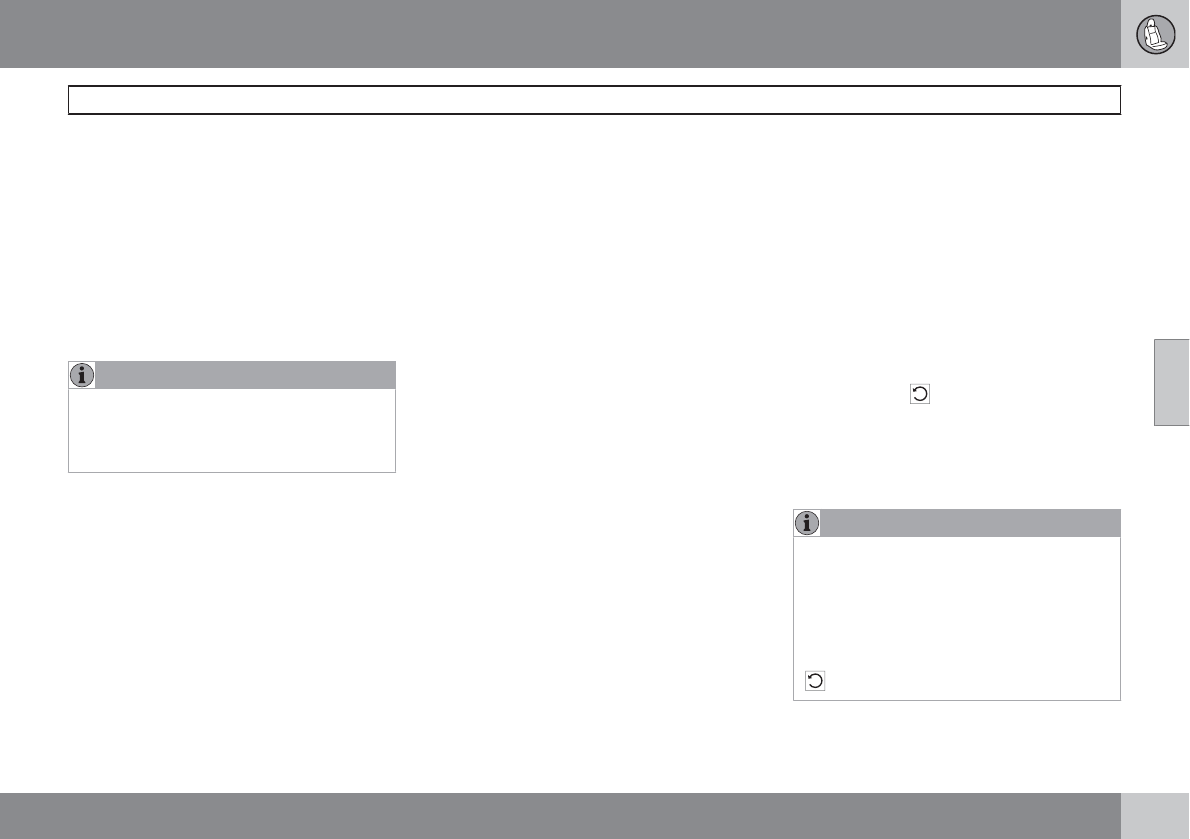
04 Comfort and driving pleasure
Adaptive Cruise Control (ACC)*
04
``
* Option/accessory, for more information, see Introduction.
159
Standby mode due to action by the driver
ACC is temporarily deactivated and put in
standby mode:
•
when the brakes are applied
•
if the driver's seat belt is taken off
•
If the driver's door is opened
•
if the gear selector is moved to N
•
if the accelerator pedal is depressed for
more than 1 minute.
NOTE
If the accelerator pedal is only depressed for
a short time, such as when passing another
vehicle, ACC is deactivated temporarily and
is reactivated when the pedal is released.
Automatic standby mode
Adaptive cruise control is linked to other sys-
tems such as the stability and traction control
system (DSTC). If this system is not functioning
properly, adaptive cruise control is automati-
cally deactivated and will go into standby
mode.
In the event of automatic deactivation, an audi-
ble signal will sound and the message
Cruise
control Cancelled
is shown in the display.
The driver must then intervene and adapt the
vehicle's speed to the surrounding traffic and
regulate the distance to the vehicle ahead.
An automatic switch to standby mode may be
caused if:
•
the wheels lose traction
•
brake temperature is high
•
the radar sensor is obstructed by, for
example, wet snow or rain.
Queue Assist*
The following functions are linked to your vehi-
cle's automatic transmission and comprise the
Queue Assist feature.
Please note that the lowest speed that can be
set is 18 mph (30 km/h), although ACC can
maintain a set speed/distance to a vehicle
ahead down to a standstill. Queue Assist con-
sists of the following features:
Enhanced speed interval
Your vehicle can maintain the set time interval
to the vehicle ahead at any permissible speed,
including a complete stop.
In order to activate ACC at speeds below
18 mph (30 km/h):
•
The vehicle ahead must be within a rea-
sonable distance (not farther away than
approx. 100 ft/30 meters)
•
The lowest speed that can be selected is
18 mph (30 km/h), although ACC will also
help maintain the set time interval to the
vehicle ahead at lower speeds, including a
complete stop.
During short stops (less than approximately
3 seconds) in slow-moving traffic, your vehicle
will begin moving again automatically as soon
as the vehicle ahead begins to move.
If it takes more than 3 seconds for the vehicle
ahead to begin moving, ACC will be automati-
cally go into standby mode.
The driver will then have to reactivate ACC in
one of the following ways:
•
By pressing
•
By accelerating up to at least 3 mph
(4 km/h)
Your vehicle will then resume following the
vehicle ahead at the set time interval.
NOTE
ACC can remain active and keep your vehi-
cle at a standstill for up to 2 minutes. After
2 minutes have elapsed, the parking brake
will be engaged and ACC will go into
standby mode.
To reactivate ACC, the driver must release
the parking brake (see page 125) and press
.


















